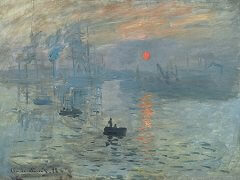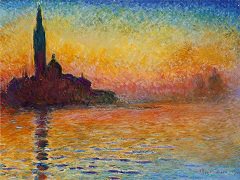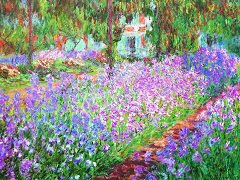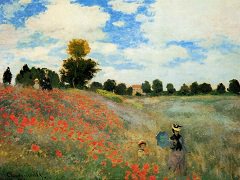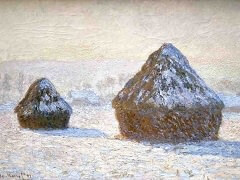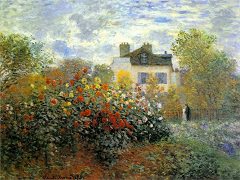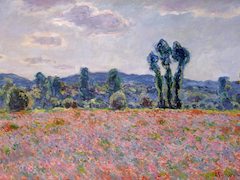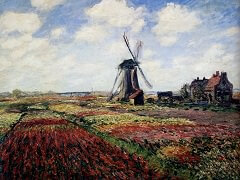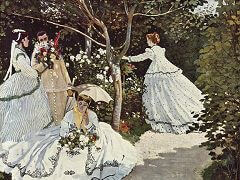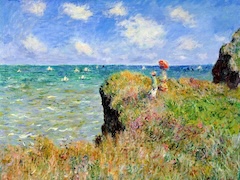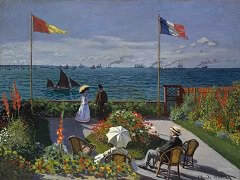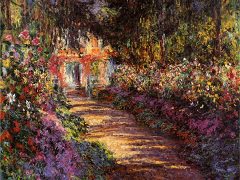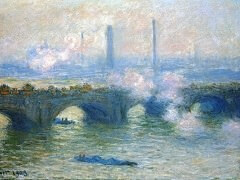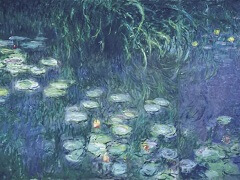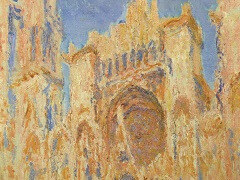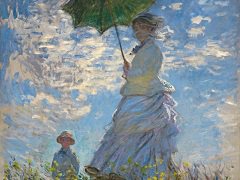Morning on the Seine near Giverny, 1897 - by Claude Monet
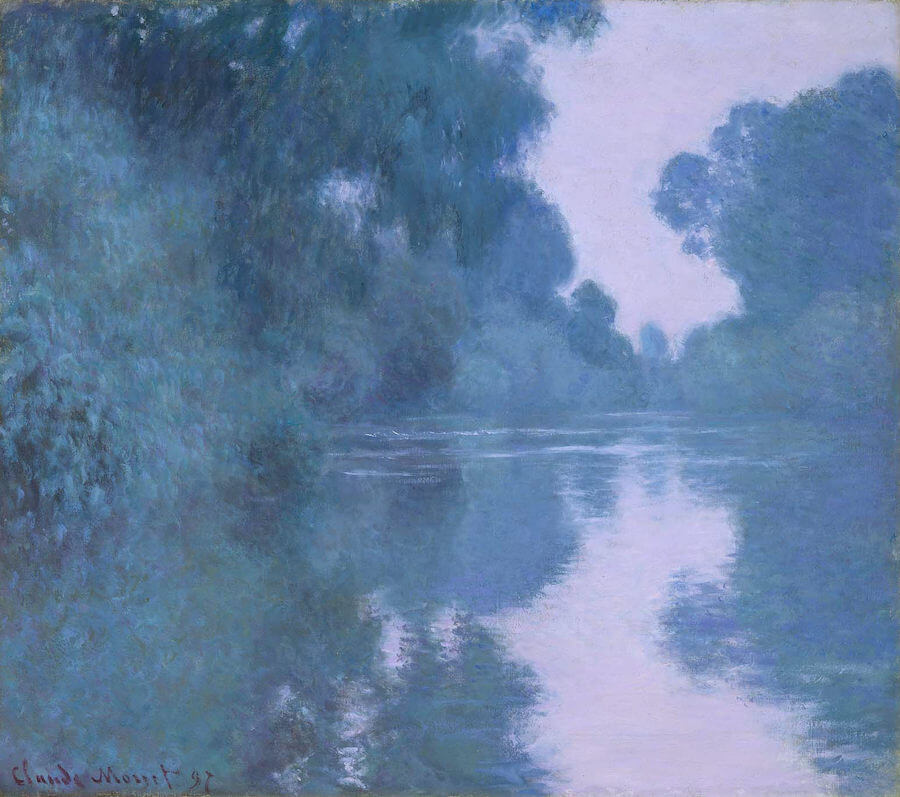
The Seine, a symbol of France, features in so many of Monet's work that it became his most used motif. From 1896 to 1897, Monet decided to use the river in a remarkable series of paintings. In all, he produced 21 pictures in the series. What renders this series like no other is that it records the dawn on one single motif, moment by moment, within one period. Although critics had assumed this was what Monet was attempting in other series paintings, none of the previous series had been concerned with the changing light within such a tight time-frame.
The colors used in the paintings are harmonious, and the effect created has tapestry qualities. In the paintings, the eye is drawn through the work to where the sky meets the water. The sun is starting to rise, causing a rose effect in the sky and a tint to the nearest trees. The brushstrokes used are integrated to add to the harmony of the work. The atmospheric tone centers around one color: blue, and how it fades slowly with the approaching sun. Here it has almost disappeared. In order to capture the progress of this different light, Monet would get up each morning at before dawn to work.

